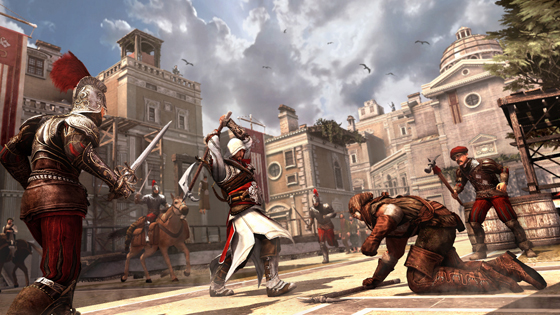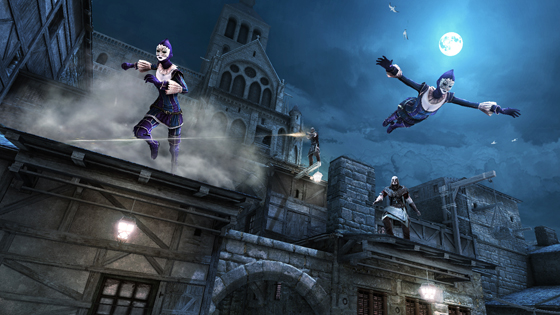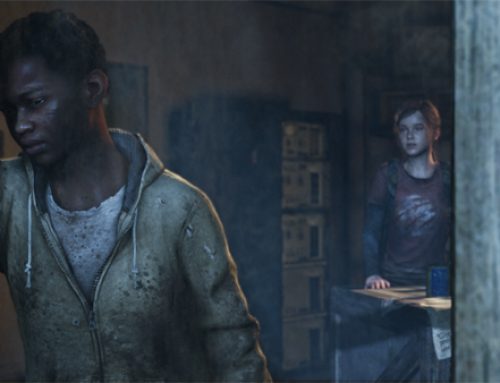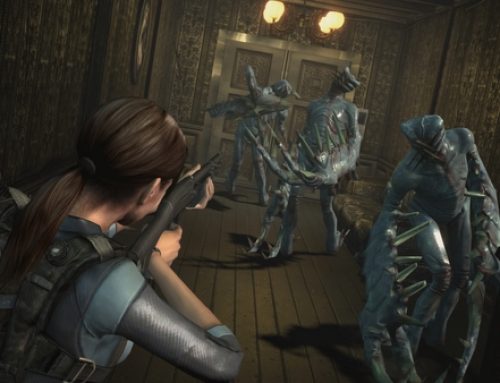
Ubisoft Montreal's "Assassin's Creed Brotherhood" gives gamers a chance to explore Renaissance-era Rome, and even imparts a history lesson or two.
Even the best open-world games can feel like a chore because they’re often packed with pointless races, tedious errands and gambling-related minigames. Such activities, while fun for a while, dilute the core story and make it too easy for players to become sidetracked or lose interest in the plot.
“Assassin’s Creed Brotherhood” (rated M, $60 on Xbox 360 or PlayStation 3) however, has some of the most compelling diversions you’ll find, ranging from solving puzzles to decode secret transmissions, hunting down and destroying Renaissance-era technological marvels or searching for treasures beneath ruins. During my playthrough of “Brotherhood,” I spent several hours completing optional content and never once felt like I was getting away for the main story. Nor did I become tired of repetitive bonus content and end up deciding to take a break.
Like the two “Assassin’s Creed” stories before it, “Brotherhood” follows Desmond Miles, a modern-day guy who’s using a futuristic device called the animus to relive the memories of his ancestors. The game picks up right where “Assassin’s Creed II” left off, in Renaissance-era Italy with Desmond inhabiting Ezio Auditore da Firenze, an Italian nobleman locked in a power struggle with the powerful Borgia family, a real-life clan whose members included a pope and a cardinal. Along the way, he’ll again interact with historical characters such as Leonardo da Vinci and Niccolo Machiavelli.
“Brotherhood” is the continuation of a complex tale but thankfully brings newcomers up to date on the “Assassin’s Creed” universe with a short introductory movie that recaps previous games. The movie gives you just enough context to appreciate “Brotherhood,” but doesn’t give away the nuances of the previous games’ stories. After I, a newcomer to the series, finished “Brotherhood,” I resolved to one day dust off that copy of “Assassin’s Creed II” that’s been sitting on my shelf for nearly a year.
In “Brotherhood,” events take Ezio and Desmond to Rome, where Ezio will try to dust himself off after a disastrous defeat and raise a brotherhood of assassins to knock the Borgia clan from power once and for all.
Like past “Assassin’s Creed” games, “Brotherhood” is organized into chapters represented by DNA sequences. These chapters are each broken up into short missions that revolve around a mix of sneaking, assassinating and parkour.

Ubisoft has helped keep "Assassin's Creed Brotherhood's" multiplayer modes fresh with the addition of new, free content.
Between missions, Desmond/Ezio has the opportunity to complete side quests. These missions serve the core game well. Instead of shooting skunks while some guy holds your family hostage, like in “Red Dead Redemption,” you’re recruiting assassins who you can call to aid you in a fight, working to thwart the Borgias’ attempt to build war machines, or trying to decode secret messages left within the animus. (In a rare move for a video game published by a multinational corporation, some of these coded messages are overtly political.)
“Brotherhood’s” breed of online multiplayer, a first for the series, is a refreshing departure from the standard deathmatch, capture the flag and territory control game types that are staples of first-person shooters. The games have a slower, tenser pace punctuated by frenetic bits of stabby, chase-filled action.
“Wanted” is “ACB’s” free-for-all mode, with up to eight assassins wandering independently around the levels. Each would-be killer is assigned another player as a target. A picture of your quarry and a radar-like indicator guide you to their vicinity. Your job isn’t easy, though, because there are literally dozens of identical-looking character models wandering around the city. Figuring out which “doctor” is the one you’re supposed to kill is part of the challenge.
As you stalk your prey, you have to worry about whether other players are hunting you. You can’t just blindly run through the streets until you’re close to your mark because you’ll make yourself more conspicuous to your quarry and any potential pursuer. Additionally, you receive a score bonus if you’re able to assassinate your target covertly. There’s a constant tension between being patient enough to net a high kill score and being so patient that it gets you killed.
“Alliance” tasks two teams of two with hunting each other, allowing for nuanced strategies, but my favorite mode was probably “Manhunt.” In this mode, one group of four players is the hunter and the other is the mark. The hunted characters get points they longer they’re able to stay alive, with extra points awarded if you’re able to stay in a group with your fellow players.
At a time where most multiplayer game types feel like variations on the same handful of themes, it’s refreshing to find yourself in a situation where you have to learn how to play a whole new game type. For those getting acclimated to “ACB’s” multiplayer, Manhunt is probably the best mode to cut your teeth on. You can focus on hunting without having to worry about someone else sneaking up behind you and stabbing you in the back.



